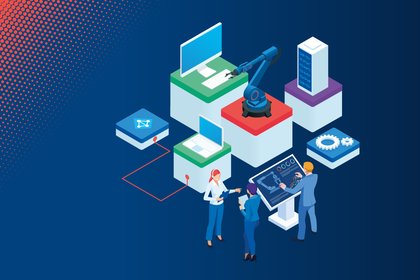Unlocking Potentials: 7 Steps to Enhance Efficiency in After-Sales
Your situation may well be the same as that currently affecting many companies: The organization of service teams is becoming increasingly complex, fewer service technicians are having to work on an ever-increasing number of tasks, and your service team’s first-time-fix rate is going down.

These problems are quickly explained: Demographic change is leading to a shortage of skilled workers in the aftersales area. But what can be done about it? An important response is to improve the information flow in service. We show you in seven steps, how you can structure service information to increase effectiveness in the aftersales area.
Step 1: What’s missing?
As is so often the case, you first have to identify the ACTUAL state of affairs, before you can start improving service communication. Which specific problems are your service technicians facing? Why are some service callouts unsuccessful? What reasons make follow-up visits necessary to resolve a service problem? It often turns out that the service callout is being hampered because information is missing, or difficult to access.
Step 2: Where to find it?
So in a second step, have a word with the sources of information within your company. What information is available, at what level of quality, and how easily can it be retrieved in the service callout? In this step, identify any gaps in the information base, as well as any structural and other quality weaknesses in your service communication.
Step 3: What are you communicating?
Now ask your service team about their communication habits. In this way, you can determine where content is missing, as well as how the service technicians prefer to communicate. There are bound to be a few surprises. In this step, for example, a measurement technology company established that their service experts were photographing almost all the loose-leaf documentation so that they could read it on their smartphones. Which answered the question about which platform to use in future: mobile apps, instead of the previous loose-leaf binder.
Step 4: What benefits are you looking for?
In the fourth step, assess the advantages you expect to achieve by improving the information flow in the service team. Try to identify the advantages at different levels (such as time spent searching, training courses, faster implementation), and quantify them exactly.
Step 5: How to ensure quality?
It is now time to define the quality of service information you need to achieve your aims. This requires standards for the relevance, scope and specific formulation of the service information. You must also have a quality process, to make sure that these standards are maintained, and developed further.
Step 6: How to go digital?
It is certainly possible to achieve a lot by conventional means when it comes to communication with the service team, but with a digital solution, you unleash the power of a structured and automated information platform. You should therefore take a look at different solutions for automated service communication, and decide which software is the best for achieving your aims.
Step 7: How to measure success?
Remember Step 4? There you defined the benefits you wanted to achieve with a service platform. Now, in this final step, devise measures that will establish whether or not these aims have also been achieved. For example, first-time-fix rate, customer satisfaction and employee productivity are typical parameters that service teams can include in their evaluations.
Structured and automated platforms for service communication are an important response to the current challenges being experienced in the aftersales area. Improved communication unlocks potential that many companies have so far failed to exploit.

Download our checklist now!
Play a trick on demographic change! With our checklist for optimizing the information flow in service, you can easily check for yourself where this potential is hiding in your company. Download the checklist now!
Do you know Quanos InfoTwin?
If you would like to fulfill the most urgent needs of your service team and help technicians to achieve greater efficiency in their day-to-day work, Quanos InfoTwin is the key. Quanos InfoTwin is a platform that supports service teams with planning, preparing, and carrying out efficient service call-outs by providing relevant information and intuitive step-by-step instructions – regardless of when and where your service technicians are needed.


